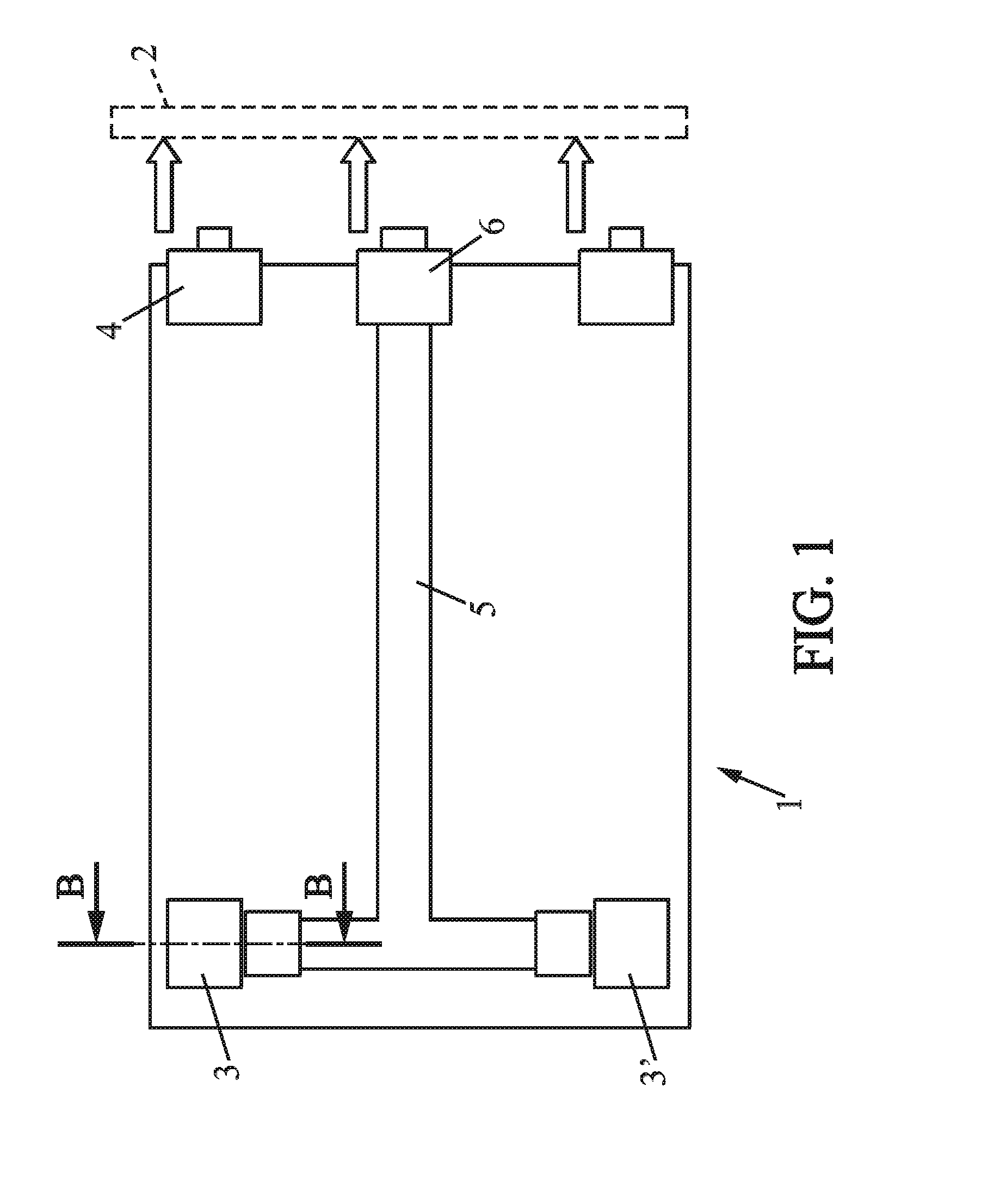Optical Circuit Board
a technology of optical circuit boards and printed circuit boards, applied in the direction of optical waveguide light guides, instruments, optical elements, etc., can solve the problems of difficult to guarantee good signal integrity, the limit of electrical communication between printed circuit boards (pcbs) is reached
- Summary
- Abstract
- Description
- Claims
- Application Information
AI Technical Summary
Benefits of technology
Problems solved by technology
Method used
Image
Examples
second embodiment
[0040]FIG. 3 now shows the invention. Compared to the embodiment of FIG. 2, the embodiment of FIG. 3 differs in that one does not use a heat-dissipating printed circuit board 14. It does not either use a heat spreader. In the following embodiments, as well as in the above embodiment, the heat spreader may be optional. Thus, the opto-electrical components 15a, 15b are directly fixed to the heat sink 18. The opto-electrical components 15a, 15b are connected electrically to an electrical track of the system card 1, such as the bottom card 7b, by wire bonding. The electronic control components 16 are therefore provided directly on the body of the system card and electrically connected to the electrical layer 7b by any suitable way.
third embodiment
[0041]FIG. 4 now shows a Compared to the embodiment of FIG. 3, the main difference lies in the geometry of the optical coupling device 20. There will be a longer optical path inside the optical coupling device, for example by providing a plurality of mirrors 24, 24b, 24c between the interfaces of the optical coupling device. The optical coupling device 20 may even project from the top face 1a of the board 1, and light may even propagate inside the optical coupling device in a plane higher along direction Z, than the top face 1a of the card 1.
fourth embodiment
[0042]FIG. 5 now shows a Compared to the embodiment of FIG. 3, it differs in that the opto-electrical components 15a, 15b are electrically connected to the top electrical layer 7a of the board 1. Two cavities 12a, 12b are provided in the body 17 of the card 1. The cavity 12a receives the heat sink 18 which extends also at the level of the optical layer 9, up to the top electrical layer 7a. The second cavity 12b receives a portion of the optical coupling device 20. Light emitted from a laser 15a along direction Z upward is reflected by a first mirror 24a to propagate inside the coupling device 20 along direction X toward the left until it reaches a second mirror 24b where it is reflected along direction Z downwards, until a third mirror 24c, which extends in the second cavity 12b, directs light leftward again, along direction X, to the suitable optical waveguide 10b. In the present embodiment, light will propagate on the left hand side part of the optical layer 9. Light directed fro...
PUM
 Login to View More
Login to View More Abstract
Description
Claims
Application Information
 Login to View More
Login to View More - R&D
- Intellectual Property
- Life Sciences
- Materials
- Tech Scout
- Unparalleled Data Quality
- Higher Quality Content
- 60% Fewer Hallucinations
Browse by: Latest US Patents, China's latest patents, Technical Efficacy Thesaurus, Application Domain, Technology Topic, Popular Technical Reports.
© 2025 PatSnap. All rights reserved.Legal|Privacy policy|Modern Slavery Act Transparency Statement|Sitemap|About US| Contact US: help@patsnap.com



